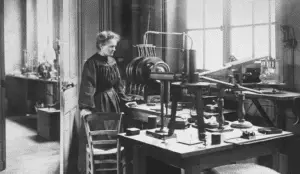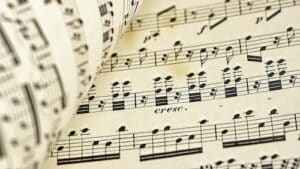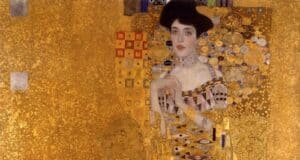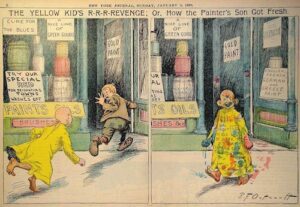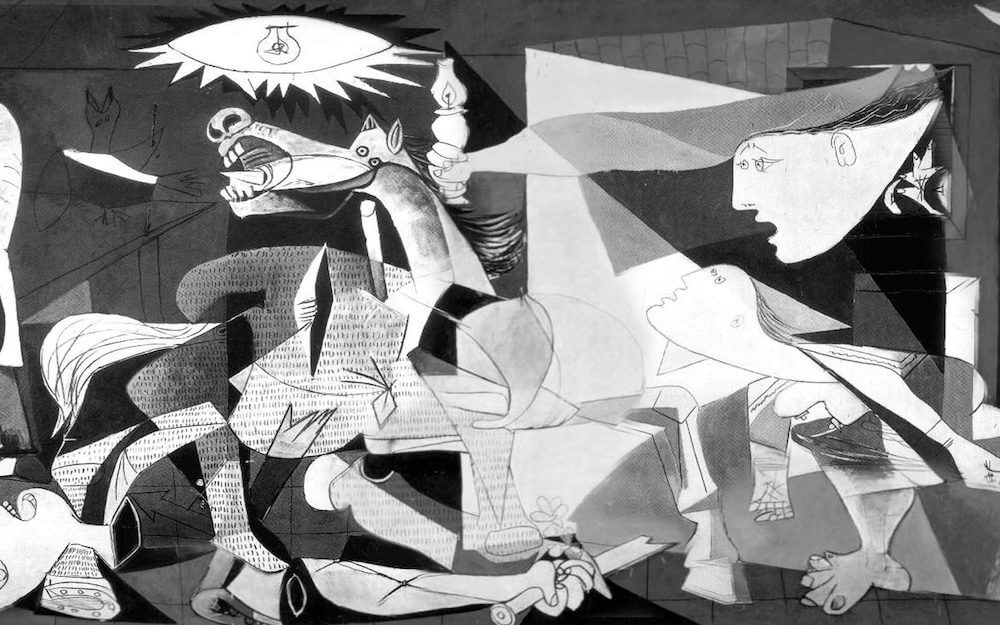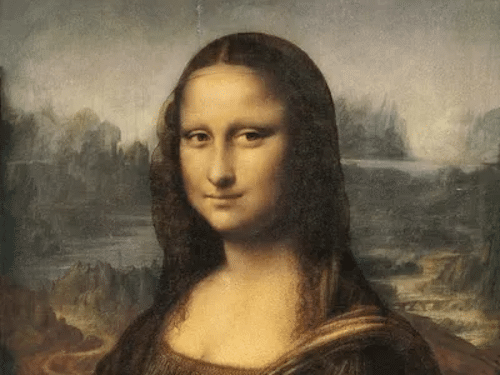Classical Music History: A 1,000-Year Journey Through Time
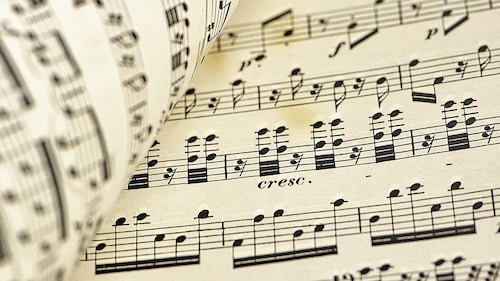
When we hear the phrase “classical music” or “classical music history,” there is a big chance we are thinking about Mozart, Bach, Vivaldi, grand concert halls, big orchestras, royal courts, white wigs, and the audience dressed up in their finest crinolins. Then again, you might have a different association with the notion.

Oxford dictionary defines classical music as serious music written in the European tradition between 1750 and 1830, following long-established principles (symphony, concerto, and sonata) rather than a folk, jazz, or popular tradition.
Classical music is characterized by complexity, formal structure, and artistic intent, so it is often created for performance by orchestras, chamber groups, or soloists.
In this article, we’ll trace the origins of classical music, explore its major eras and styles, and uncover surprising facts that make this timeless art form anything but boring.
When was Classical Music Invented?
Classical music is both a general term and the name of a specific period in music history — the Classical Period, c. 1730–1820. In everyday use, however, the term covers a much wider historical range from medieval chant to 21st-century concert works.
Classical music wasn’t born in a year: its foundations trace back to Ancient Greece. Greek philosophers like Pythagoras and Plato believed music reflected cosmic harmony. They created early theories about scales, intervals, and the ethical power of music. However, Greek music was mostly transmitted orally, so few actual examples survive.

The Seikilos Epitaph (c. 1st century CE) is considered the oldest complete piece of notated music in the world. It’s a short song with lyrics and musical notation engraved on a stele found in Tralles, Turkey.


What we now call classical music truly began to take shape during the Middle Ages, around the 9th century, with the rise of notated religious chant in monasteries — simple, sacred vocal melodies.
By the 11th century, Guido of Arezzo, an Italian Benedictine monk, developed an early system of musical notation, allowing composers to write down melodies. Before Guido, music was mostly taught by oral repetition, where students memorized chants by ear, which was slow and often inaccurate. Guido’s goal was to speed up teaching and reduce mistakes.

Guido introduced the four-line staff, a visual framework for pitch (modern notation uses five lines). He also named the musical notes using the hymn Ut queant laxis, creating do-re-mi (originally ut-re-mi-fa-sol-la). This shift from oral to written tradition is a revolutionary moment, as it allowed music to be studied, preserved, and developed with increasing complexity.

By the 12th to 14th centuries, music developed from simple chant into polyphony, music with multiple, independent melodic lines sounding together. In churches like Notre Dame Cathedral in Paris, composers such as Léonin and Pérotin pioneered early polyphonic techniques. Their music added new vocal lines over traditional chant, creating rich, layered textures. For the first time, composers intentionally organized sound across time with harmony, rhythm, and architecture, laying the groundwork for later classical forms.

The rise of polyphony went hand in hand with the development of musical instruments. The pipe organ, introduced in the 8th–10th centuries, became more complex and refined. During the Renaissance, organ building flourished across Europe, especially in Germany, Italy, and the Netherlands, where skilled craftsmen began building organs with multiple manuals (keyboards), stops, and elaborate pipe arrangements. The organ’s grandeur and versatility made it a natural partner for the layered textures of polyphonic music.

The 14th-century composer Guillaume de Machaut wrote the first complete setting of the Catholic Mass by a single composer: the Mass of Notre Dame.

During this time, music also became central in the courts of royalty. Monarchs and aristocrats began patronizing composers and performers, commissioning both sacred and secular music to celebrate power, love, and pageantry. With this came the rise of instrumental music: early versions of the lute and fiddle were played at feasts and dances. So, music was no longer just a tool of worship, but also became a form of entertainment, courtly display, and personal expression.
This period laid the cultural and structural foundations for what we now call classical music. The next chapters will explore how these early traditions evolved into the great musical periods, including the Baroque, Classical, and Romantic eras, each adding new layers of expression, innovation, and form to this extraordinary tradition.
What are the Classical Music Periods in Classical Music History?
While classical music as a tradition spans over 1,000 years, its core stylistic periods begin around 1600 and stretch into the 21st century.
The Baroque era (c. 1600–1750) is often seen as the real beginning of classical music as we know it today. It was a time of grand music known for its ornate, intricate melodies and dramatic contrasts in volume and emotion. Think of it like a fancy musical decoration with lots of flourishes and detail, often played by instruments like the harpsichord, violin, and organ.

Baroque composers loved opposites: loud vs. soft, soloist vs. group, exuberant joy or profound introspection. For example, in Vivaldi’s “Four Seasons,” the violin soloist alternates with the orchestra to paint vivid scenes like storms or birdsong.This era gave us important types of music like opera, oratorio (similar to opera but without staging — like Handel’s Messiah), and instrumental suites (collections of dance pieces). The Baroque orchestra was smaller than today’s, but many familiar instruments were already used: pipe organ, early versions of violins, violas, cellos, and lutes.

Jacopo Peri’s Euridice is the first surviving opera, which premiered in 1600.

Must-know composers of the Baroque era: J.S. Bach, Antonio Vivaldi, George Frideric Handel.
The Classical Period (c. 1730–1820) is just one chapter in classical music history, but it’s the one that gave the whole tradition its name. While Baroque music was ornate and dramatic, Classical style is about clear melodies, emotional balance, and order in musical form.

This period gave us many of the music forms we now think of as “classical”: sonata (a work for solo instrument or a small group), symphony (a large work for orchestra), string quartet (two violins, viola, cello), and concerto (a solo instrument with an orchestra).
It was then that music moved beyond the royal courts and became a public art. In big cities like Vienna, Paris, and London, opera houses appeared, and opera became a cultural event for the growing middle class.

Must-know composers of the Classical Period: Wolfgang Amadeus Mozart, Joseph Haydn, and Ludwig van Beethoven (early works).
The Romantic period (c. 1800–1910) was about emotion, freedom, and imagination. Composers began to focus on individual expression, treating music as an instrument to tell stories, explore feelings, and even reflect national identity.

Romantic composers wanted their music to feel passionate and powerful. To pull listeners into the mood, they stretched melodies, manipulated forms, added tension, and used dramatic changes in volume. These artists started highlighting their national identity, using folk songs, dances, and national stories in their music (think of Chopin’s polonaises).

Composers-performers like Franz Liszt and Niccolò Paganini were rock stars at the time. They traveled extensively and gave concerts in front of large audiences. Liszt’s performances created such a frenzy among fans that the phenomenon was dubbed “Lisztomania.” There were stories of women swooning and fighting over his gloves and handkerchiefs.

Must-know composers of the Romantic era: Ludwig van Beethoven (later works), Frédéric Chopin, Franz Liszt, Johannes Brahms.
Strictly speaking, the Romantic era is considered the last major chapter of the “Common Practice Period.” It was a time when most Western music followed the same rules of harmony, tonality, and structure.
Classical music hadn’t ended by 1910, but it diversified dramatically. The 20th century brought atonality and dissonance, jazz and folk influences, minimalism, and film scores. So, in a way, Romanticism does mark the end of the classical tradition as it had been known for centuries.
5 Classical Music History Facts You Can’t Not Know
The Most Famous Four Notes in Music. Beethoven’s Symphony No. 5 opens with four notes that changed music forever: “da-da-da-DUM.” Written in 1808, this symphony is one of the most recognized pieces in history, and it is still regularly performed worldwide.

The Longest Symphony Ever Written. Mahler’s Symphony No. 3 is a musical giant. It lasts over 90 minutes, making it the longest regularly performed symphony. It needs a huge orchestra, a women’s and children’s choir, and even a solo singer — sometimes over 200 artists on stage. Mahler said it was meant to capture “all of nature.”

Classical Music Was Sent into Space. In 1977, NASA’s Voyager spacecraft carried a golden record into deep space in case aliens find it. Among the tracks were Bach’s Brandenburg Concerto No. 2 and a recording of Beethoven’s Fifth Symphony.

Ludwig van Beethoven began going deaf in his 30s, but he kept composing. He couldn’t hear anything when he wrote his famous Ninth Symphony. He “heard” the music in his head using memory, math, and imagination.
Music That Helped Study the Brain. In the early 1900s, scientists began exploring how the brain works. To test brainwaves, they sometimes played Baroque music, especially pieces by Johann Sebastian Bach, because the rhythm and structure made it easier to see how the brain responded.

Today, people still listen to Bach’s music to help them focus, relax, or study, because the calm, steady patterns can help the brain stay alert without feeling overwhelmed.
How to Learn Classical Music and Its History Without Getting Bored
At Nerdish, we love classical music, even if we’re not all experts. With so many composers, styles, and famous works to explore, it can feel overwhelming to know where to start or how to remember what you’ve learned.
That’s why we created Grandioso: a fun, interactive app that helps anyone explore the world of classical music with confidence and curiosity.
Grandioso is designed to make classical music more accessible and enjoyable. Whether you’re just getting started or want to deepen your appreciation, the app guides you through music history and essential repertoire in a way that’s easy to follow and fun to revisit.

Download Grandioso iOS Version
Download Grandioso Android Version
Inside the app, you’ll find:
- A growing library of 75+ masterpieces — from iconic symphonies to hidden gems
- Music grouped by levels to help you build knowledge step by step
- Replayable sessions that let you improve recognition and boost your scores
- Interactive quizzes after each session to reinforce memory and understanding
- Articles and historical insights on key composers and musical eras
Because learning music should be for everyone, Grandioso is also kid-friendly, perfect for families to enjoy together.
Whether you’re learning solo or with others, Grandioso helps turn listening into a lasting skill and a lifelong love.


